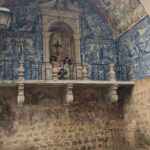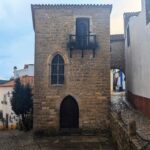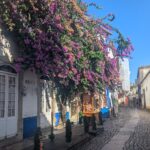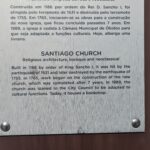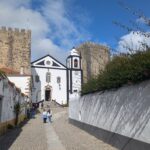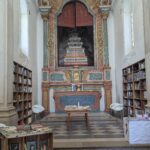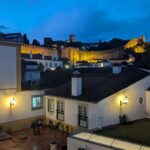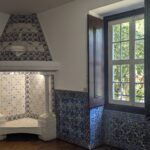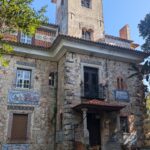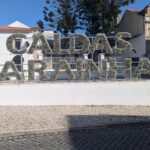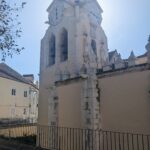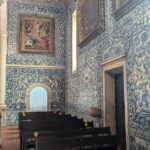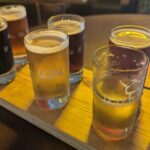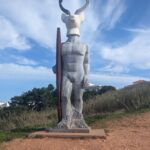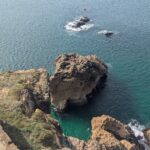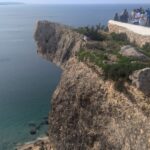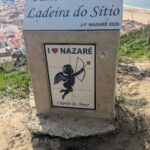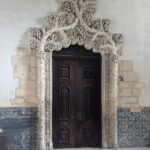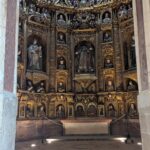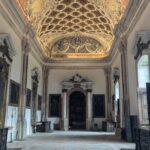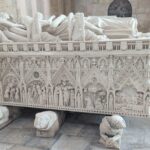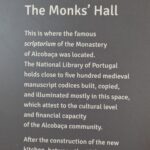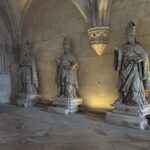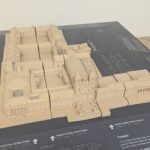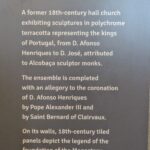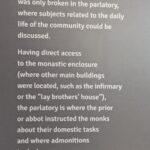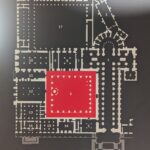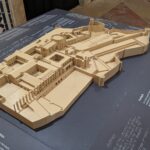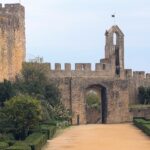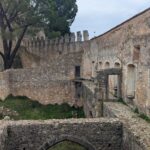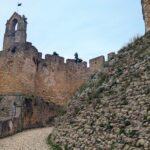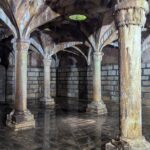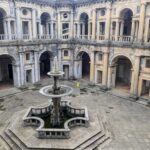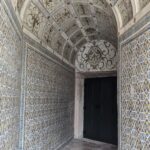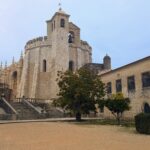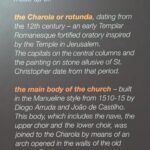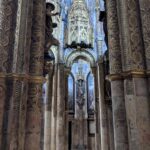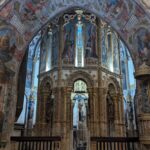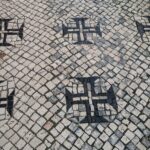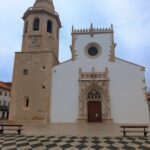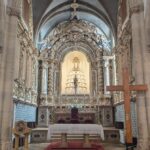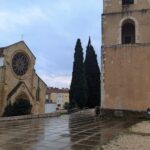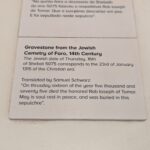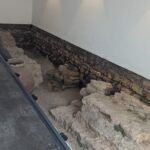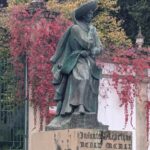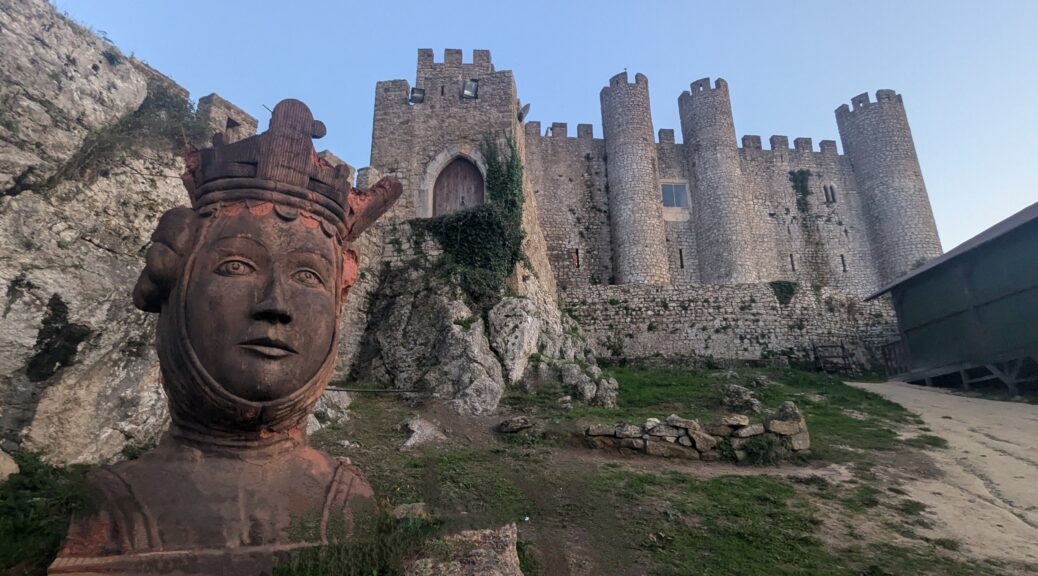
Central Portugal: Obidos, Nazaré, and Tomar
I took a road trip for eight nights to central Portugal. Two nights Obidos, one night in Nazaré, one night in Tomar, and two each in Coimbra and Porto.
It’s recommended to stay two weeks in Nazaré to see the big waves but there isn’t much else to do there, in my opinion. I would love to spend more time in Porto and definitely plan to return.
Obidos
I stayed in the Hotel Real d’Obidos. Good location right outside the city walls, lovely hotel and common areas. But beds were too hard, very uncomfortable.
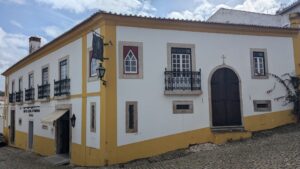
Obidos is a walled city; it became Queen Isabel’s dowry in 1282, gifted to her by King Dinis. For the next 600 years, every Portuguese monarch would do the same, giving it the nickname, “Casa das Rainhas” or the House of Queens.
I walked part of the walls, around the city and within the castle. The walls are fairly narrow and there is no rail so it can be slightly intimidating! I stayed very close to the wall.

Recommendations
- Just outside of the walled town is the Memorial Cross or Cruzeiro da Memória, it was built in the 15th c. to commemorate Alfonso Henriques victory over the Moors. There is an information center close by to pick up a map.

- The Aqueduct de Obidos can be seen from here, too. Commissioned by Queen Catherine of Austria during the 16th c., it carried water to the town’s fountains.
- Also outside the walls is St John the Baptist Church. Founded by Queen Isabel in 1309 for leprosy victims, enlarged during the 16th c., it houses the Parish Museum with some great artwork.
- The main town gate, Porta da Vila, was built around 1380. It contains some beautiful tiles in Oratory of Our Lady of Piety. There are a set of steep stairs to the walls right outside the gate.
- Igreja de Santa Maria, or Church of Saint Mary, was built on the site of a Visigoth temple that was later used as a mosque. It has been rebuilt several times. It sits in the center of Praca de Santa Maria. There is a pillory on the square, it was formerly used for “punishment or public humiliation”. It is from 1513.

- Santuario do Senhor Jesus da Pedro, Saint Peter’s Church, is from the 13th and 14th c. It was destroyed in the 1755 earthquake and rebuilt.
- The Museu Municipal de Obidos is small but definitely worth a stop. Mostly religious paintings and artifacts.

St John the Baptist, The Trinity. - The old church of São Tiago, it is now a bookstore, Livraria de São Tiago.
- The beautiful main street, Rua Direita, runs from the Porta da Vila all the way to the castle. Lots of restaurants, shops, there is plenty to see.
- The Igreja Misericordia, the Church of Mercy or the Almshouse, was founded in 1498 by Queen Leonor. It was rebuilt in the 17th century after the earthquake. The pictures look beautiful but it wasn’t open either day I was visiting.
- The Castelo Obidos is a 15th c. castle that was built as a fortress and converted to a royal palace in the 16th c. Great views of town from the walls.
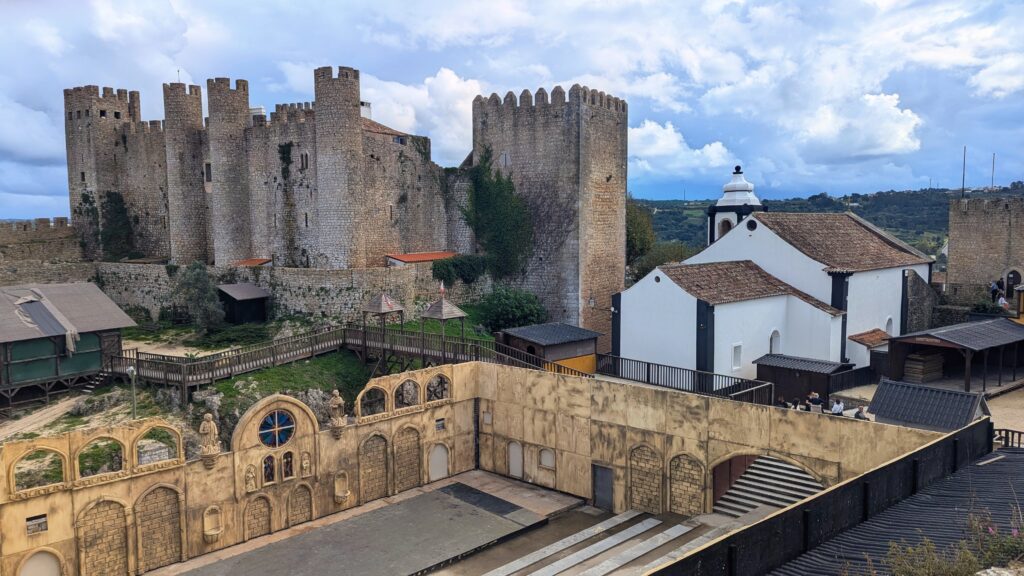
Caldas da Rainha
A short drive from Obidos is the lovely Caldas da Rainha. I went over the second afternoon after seeing everything in Obidos.
- I first went to the beautiful Museu da Cerâmica, in the house or “Quinta” of Visconde de Sacavém. The house was purchased by Portugal for the museum in 1981. There are gorgeous tiles in the home as well as pieces from the 17th c. to the early 20th c.
- Praca Republica or Praça da Fruta das Caldas da Rainha is the main square in town and the site of the daily fruit and vegetable market.
- I walked through Parque Dom Carlos I, from the ceramic museum to the downtown. There is a lake where you can rent rowboats, beautiful swans, great paths, statues, and a row of old pavilion houses that make for a great photograph.
- Igreja de Nossa Senhora do Pópulo, also referred to as the Igreja Matriz das Caldas da Rainha, is a little church adjoined to the old thermal spa. It was built in the 15th c in the Gothic style, the Manueline bell tower was completed later.
- On the walk back to my car, I stopped at the factory store, Loja da Fabrica Bordalo Pinheiro. There are some beautiful ceramic items in here, both useful and decorative, and they were very tempting but I am keeping my purchases to a minimum, I don’t want things I have to pack or move.
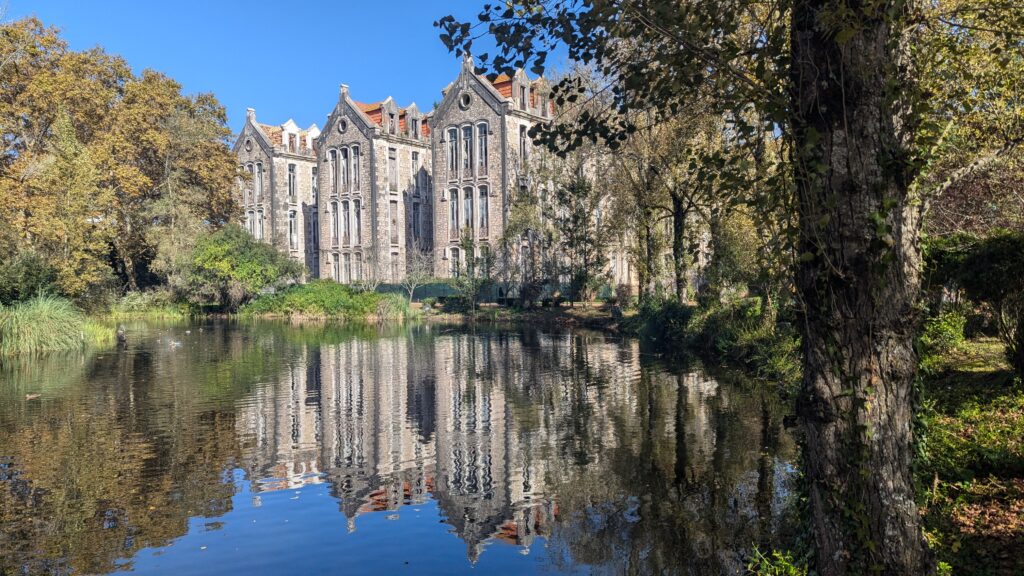
- Dona Branca in Caldas da Rainha has some good pizza, nice outdoor seating area.
- Letraeria Obidos is a local micro brewery; they have a good selection of beer. I tried a flight with a late afternoon lunch/early dinner the first day. The next day I tried the Francesinha, or “Little French Woman”, a Portuguese sandwich originating in Porto. This was very good. I had one later in Coimbra but didn’t like it nearly as much. This one only had some ham. The other had beef and chorizo, too, and was just too much meat. I read that was the more typical francesinha, however.
- Obidos Chocolate House has a large selection of chocolates and bakery items.
Nazaré
 I stayed in the beautiful Hotel Magic. The off-street parking was very welcome. I only stayed one night; I wasn’t expecting the 100 foot waves (although, hoping) but did think there would be 10-20 foot waves. Not sure why but thought that may be “normal”. However, the sea was smooth as glass. Oh, well.
I stayed in the beautiful Hotel Magic. The off-street parking was very welcome. I only stayed one night; I wasn’t expecting the 100 foot waves (although, hoping) but did think there would be 10-20 foot waves. Not sure why but thought that may be “normal”. However, the sea was smooth as glass. Oh, well.
Recommendations
I entered ‘funicular’ in maps but Google directed me to the upper station so I ended up walking all the way up the hill. I wanted to see the funicular, however, so took it back to lower town. Prices are reasonable at 2,50€ one-way or 4€ round trip.
There is a lot to see in the O Sitio Barrio.
- San Miguel Arcanjo Fort is a 16th-century fortress. It was built to protect the coast and guide ships. It stands over Praia do Norte, the site of the largest waves ever recorded. It offers some beautiful views over both Praia do Norte and Praia de Nazaré. I think it was 2€ for entry.
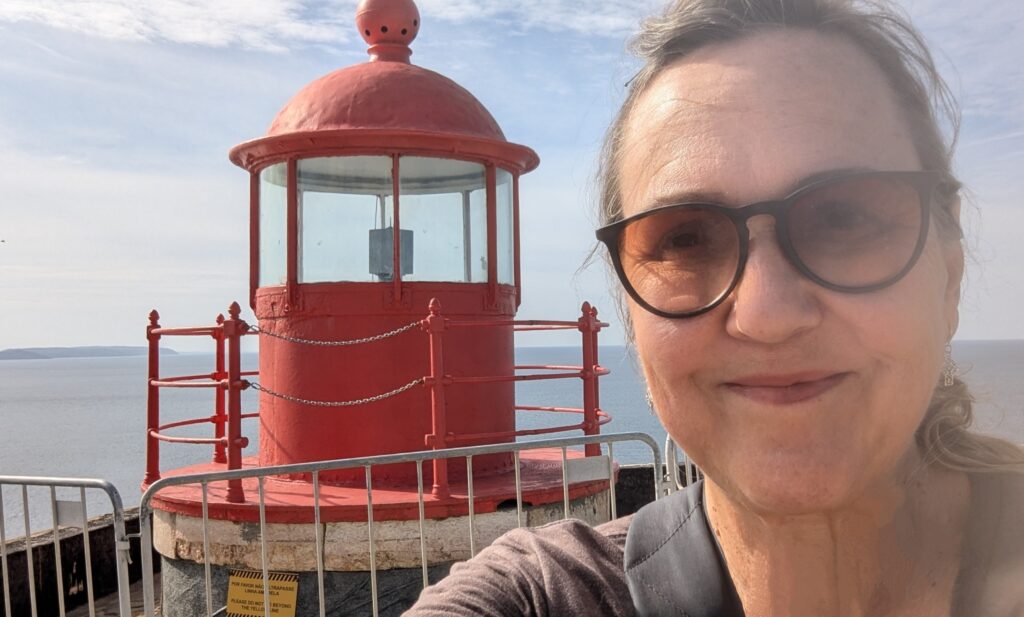
- The Farol, or lighthouse, is part of the fort, on the upper level.
- The Big Wave Museum is in the lower level of the fort, across 3 different rooms. It has some history on surfing, surfers, design of surfboards, and the geography of the large underwater canyon off the coast causing the waves.
- The site of the largest waves in the world, Praia de Norte, is just north of O Sitio and the fort.
- Church Of Nossa Senhora da Nazaré was built as a pilgrimage site in 1377. There is an image of the Virgin. It is believed to have been carved in Nazareth, in present-day Israel. It gave Nazaré its name. The interior dates from the 16th century, when the gold-covered altarpiece and walls covered in Dutch tile panels were added.
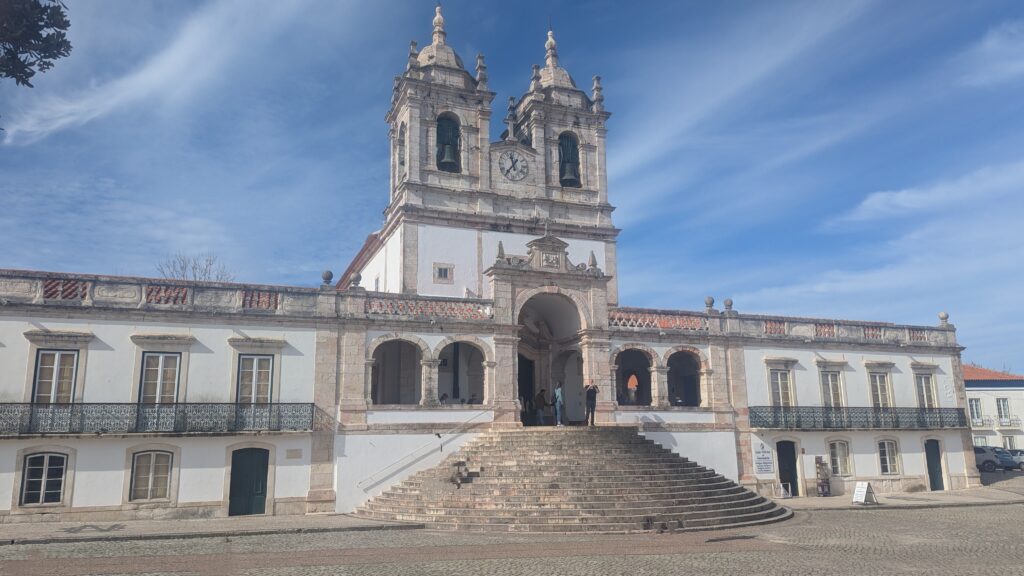
- Mindoro do Suberco is a beautiful viewpoint halfway up the hill over the Praia de Nazaré and town. I probably would have missed this if I had taken the funicular to the hill. It’s a nice walk so I do recommend either walking up or down and only taking the funicular one-way.
- The Praia de Nazaré is downtown, on the south side of O Sitio hill. I walked all along the beach. Later I visited both the Barcos Salvas Vidas, the open air boat museum on the beach, and the Dried Fish Museum.
Restaurants
- Le Petit Chef Belge, “Surf Street Food”. Had a great Tex-Mex burrito after visiting the fort and lighthouse.
- Cervejaria Berlim, I had a late lunch so just stopped here for a couple beers. Nice location overlooking the beach.

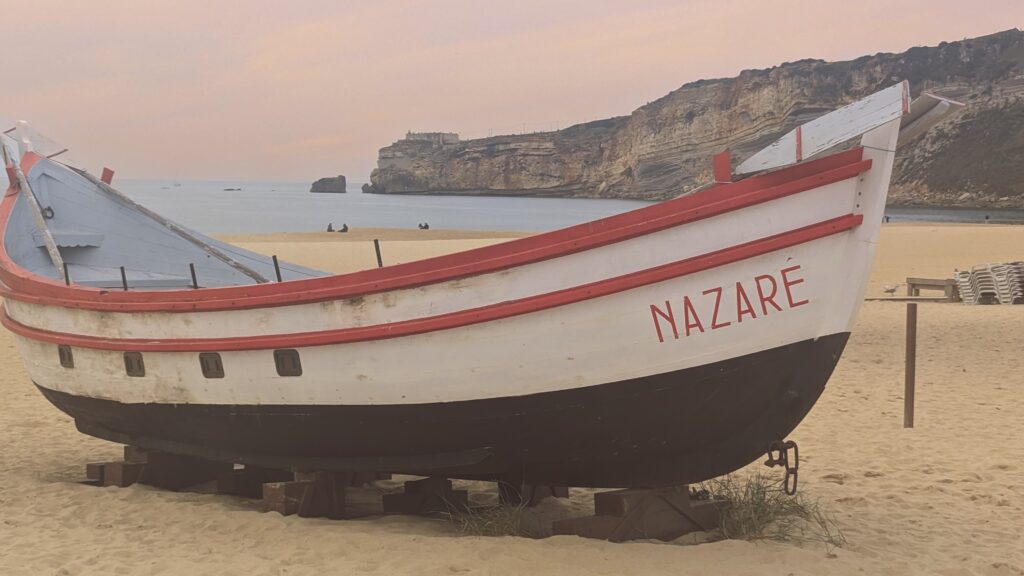

Tomar
On the drive from Nazaré to Tomar, I stopped at Alcobaca Monastery. It is from 1153. It is a UNESCO World Heritage Site. I visited the church, Tombs of King Pedro and his mistress Inês, cloisters, gardens, and the Parlatory, which was the only place the monks could speak. The Hall of Kings has statues of every king of Portugal.

Tickets are 10€, but I got in free with my residency card. I paid 2€ for the Sacristy tour with the beautiful wooden altar damaged during the 1755 earthquake. The hundreds of reliquaries in the altar were empty because they were looted by Napoleon’s troops.

The guide for the sacristy tour also stopped at the tombs and told me the story of Pedro and Inês, the lady-in-waiting to his Queen Constance. After the death of Constance, Inês was ordered killed by Pedro’s father, King Afonso IV, who did not approve of their relationship. Pedro had her crowned queen of Portugal after her death and her tomb was moved to Alcobaca. Both tombs are considered some of the best gothic works in Portugal.
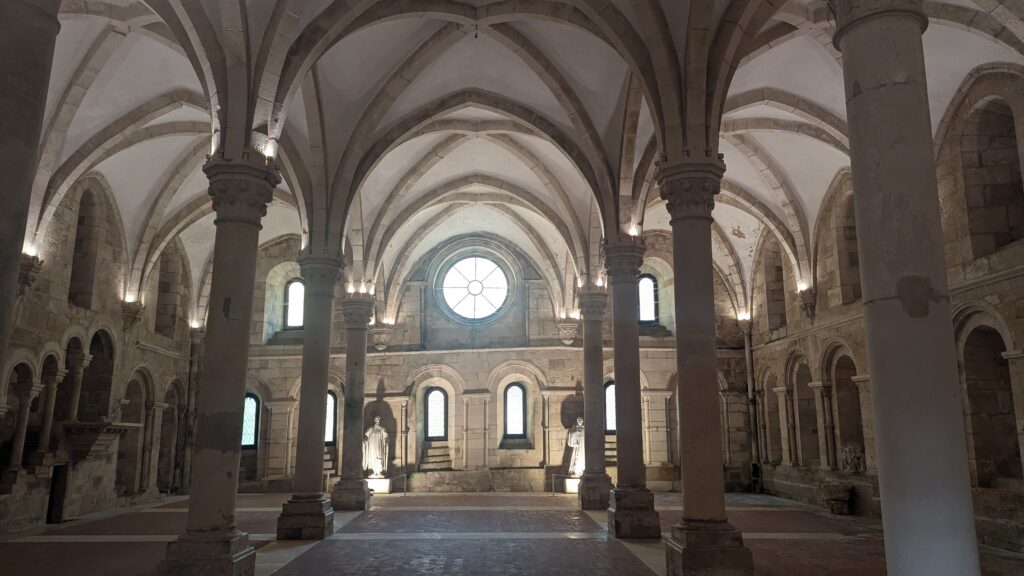
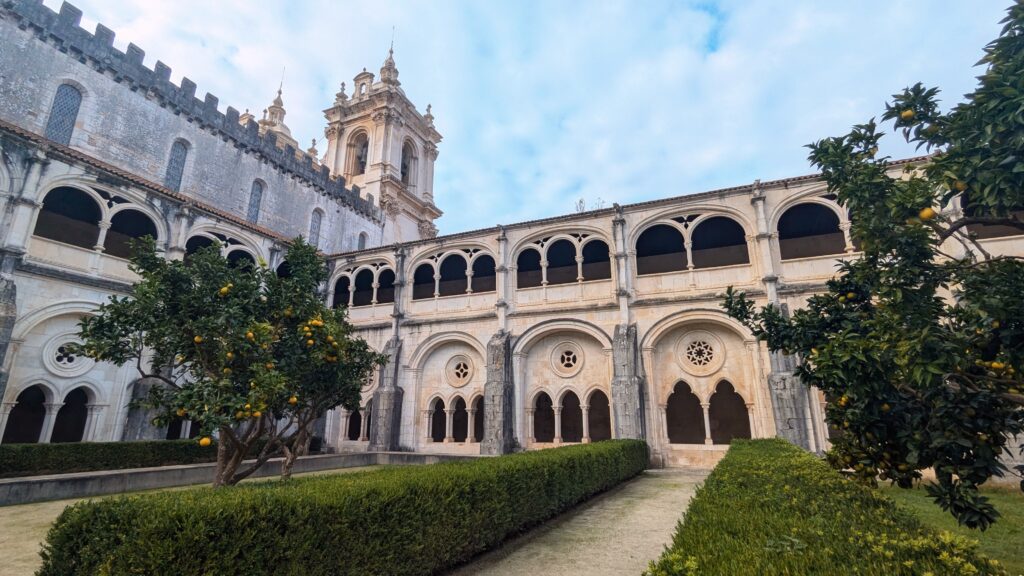
I stayed in the beautiful Thomar Boutique Hotel. It was a very convenient location in town, but it’s also a very walkable town. I had a great room, very comfortable, they offer a good breakfast.
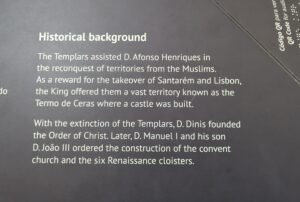 Tomar is considered the center of the Knights Templar in Portugal. I know most people have heard of them from fictional accounts but I looked them up and read several articles after deciding to visit.
Tomar is considered the center of the Knights Templar in Portugal. I know most people have heard of them from fictional accounts but I looked them up and read several articles after deciding to visit.
King Philip IV of France owed the Knights a large amount of money. Using rumors about the knights, of corruption and blasphemy, he pressured Pope Clement V to disband the group.
Following the dissolution of the Knights Templar in 1312, the Order of Christ was created in 1319. Many of the surviving Knights Templar and the Knights Templar properties in Portugal were protected by Portuguese King Denis. He refused to persecute the Knights. The headquarters of the Order of Christ was a former Knights Templar castle in Tomar.



Recommendations
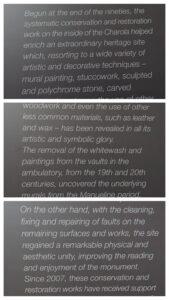
- I arrived early afternoon on a Monday when most things were closed. Fortunately, the Castelo de Tomar and Convento de Cristo were open. I walked up the hill from my hotel. The convent and castle are from the 12th c. when King Alfonso gave this region to the Knights after they helped defeat the Moors. It is a UNESCO Heritage Site. I visited the castle walls first. The castle was founded by Gualdim Pais in 1160. There are some good viewpoints inside the courtyard and access to the walls. The castle walls also include the “charola”, a circular-shaped building. It was later redesigned to be the nave of the church.
- The Aqueduct dos Pegoes is about 400 years old, it was built to provide water to the castle. I saw it from the castle courtyard and a few viewpoints inside the convent. Unfortunately, I didn’t realize until later I could have walked along it and had better access outside the castle grounds.
- The entrance to the Convento de Cristo is around the other side from the gate to the castle, 10,00€ entry. The convent is huge and beautiful. Especially the charola, the nave of the church. Pictures certainly don’t do this justice, it’s so beautiful. There are multiple viewing points and a balcony to view the Manueline-style window of the Chapter House, known as Janela do Capítulo.
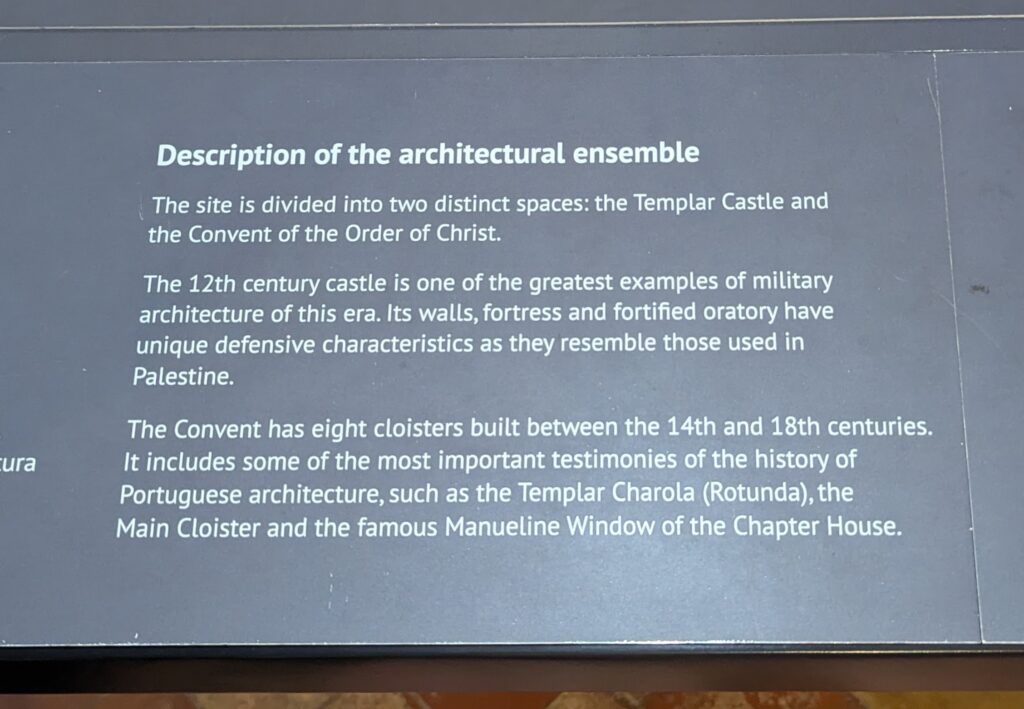

I knew I didn’t have a lot of time in the town so booked the Tomar Historical Free Walking Tour with Guru Walks Tuesday morning, before leaving for Coimbra. We had a good guide, Frederico. There are over a thousand years of history in Tomar, we obviously only covered the highlights in two hours.
- We started in the Parque do Mouchão by the waterwheel. It’s a beautiful park and I had walked through here the day before, too.
- We stopped by the Chapel of Saint Iria, hearing the story about this beautiful nun. So beautiful she attracted the unwanted attention of two men, a nobleman and a monk. She refused the proposal of the nobleman, saying she was dedicated to God. The friar, angry she rejected him, spread the rumor she was pregnant. The nobleman, angry about her “betrayal” ordered her death and dumped her body in the river. Legend says the waters of the Tagus separated to reveal her coffin, it was found by monks and she became the patron saint of Tomar. They celebrate her on October 20th. The 3 men I was with all thought this a “beautiful story”; my thought was “another woman destroyed by the lies and unwanted attention of men”. No means no.
- We also saw large traffic circle decorations and displays in churches and learned about the Festival of Trays that takes places every four years in Tomar. It was celebrated July 2023.
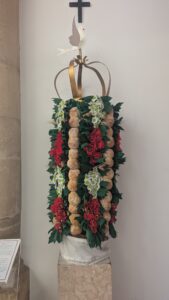
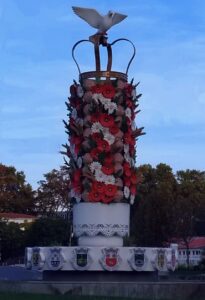 We visited the Templar Church, Igreja Santa Maria dos Olivais. Built over a Benedictine monastery in the 13th c, it contains the tombstone of Gualdim Pais.
We visited the Templar Church, Igreja Santa Maria dos Olivais. Built over a Benedictine monastery in the 13th c, it contains the tombstone of Gualdim Pais.- We talked about Henry the Navigator, who lived in Tomar, while stopping to see the Statue of Infante Henrique.
- We stopped at the Levada de Tomar Cultural Complex. The area has been in use since medieval times, used as water mills, oil presses, flour mills, a foundry, and electrical power station. Now the buildings contain various museums. I visited the Templar Museum here after the tour ended.
- We went to the Tomar Synagogue and heard about the Jewish population and the laws they lived under in Portugal. This is the oldest synagogue in Portugal.
- Finally, we went to the Praca de Republica. The center of the square has a statue of the founder of Tomar, Gualdim Paris.
- After the tour I visited the Igreja de Sao Joao Baptista. It was built in the 16th c., there is a Manueline clock tower attached.
I could definitely spend another day or two in Tomar. Great walking city.


Restaurants
- Café St. Iria I don’t remember where I ate lunch (found a place for a late lunch around 1530-1600 when most restaurants have closed) but stopped in here for a beer that evening. Good service.
** All photos property of Lisa (except where indicated), not to be copied or reproduced. **


